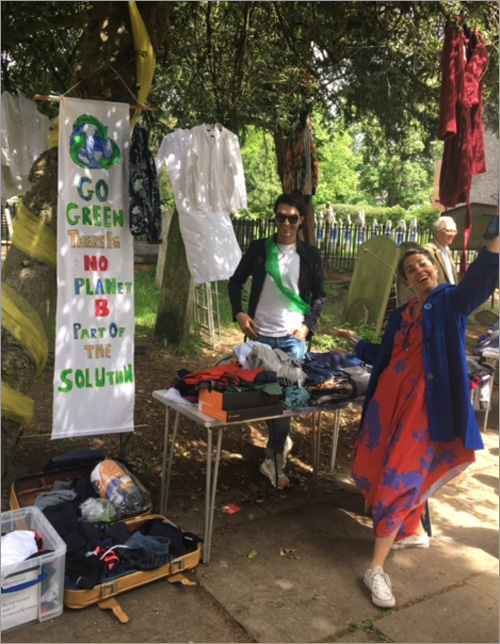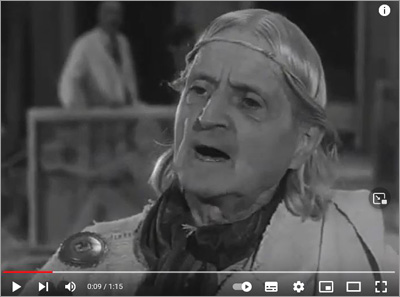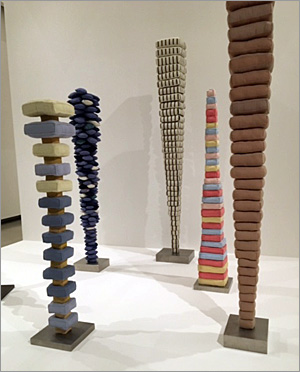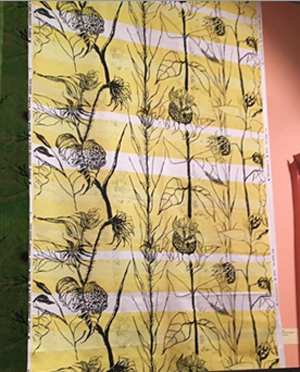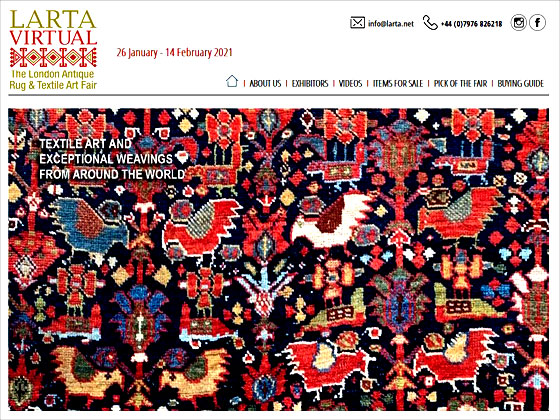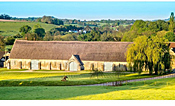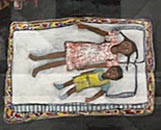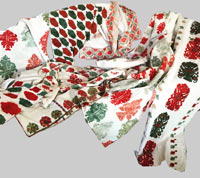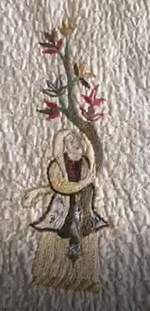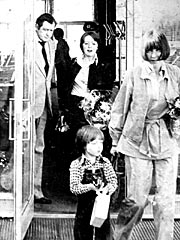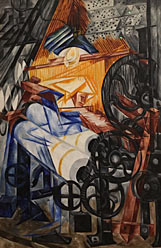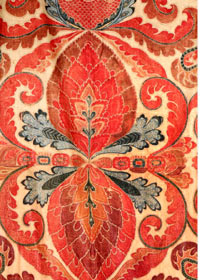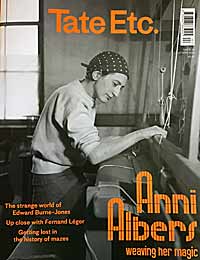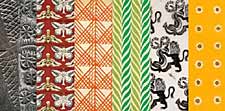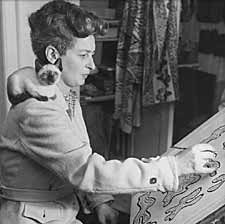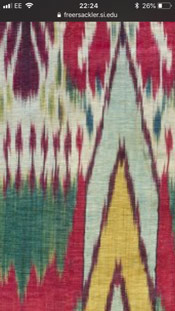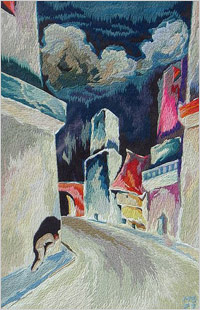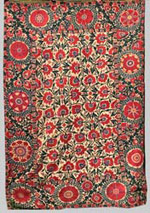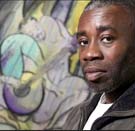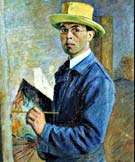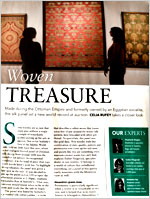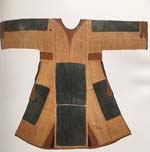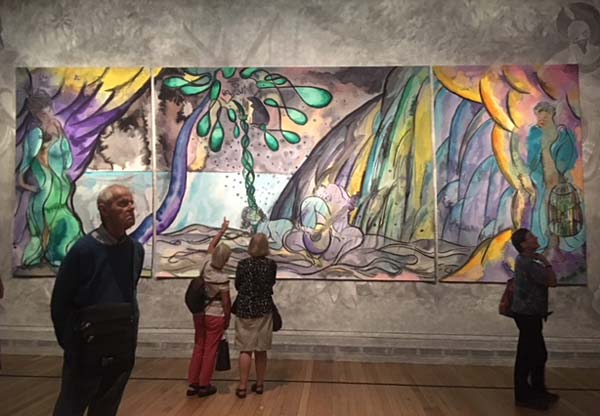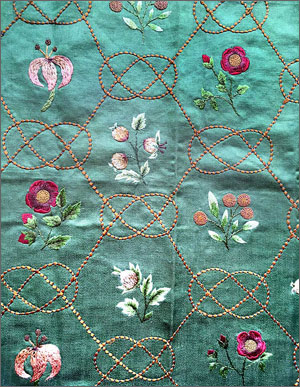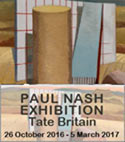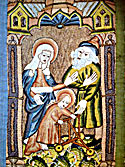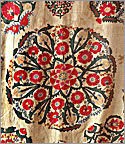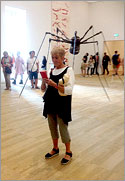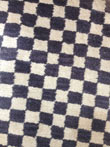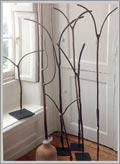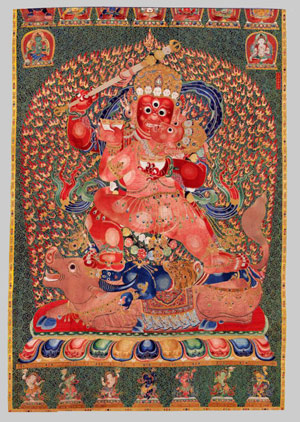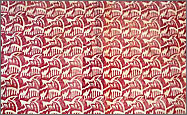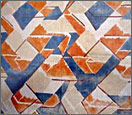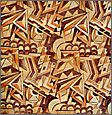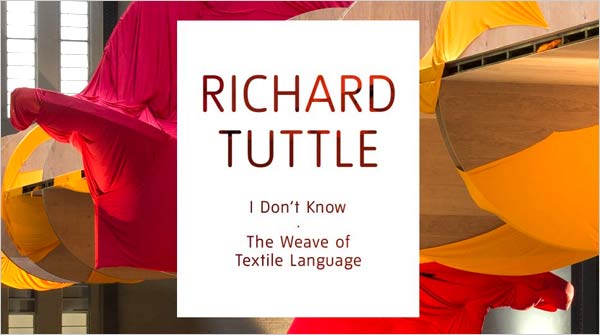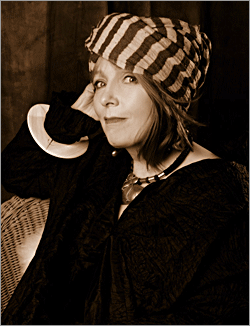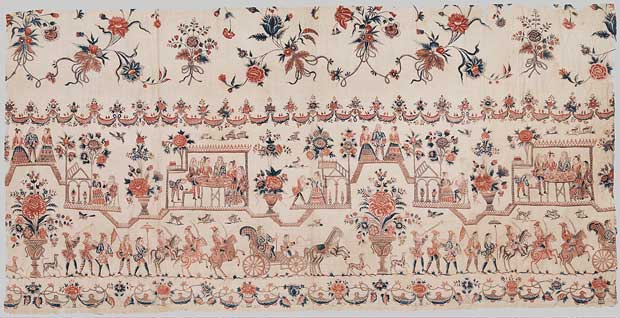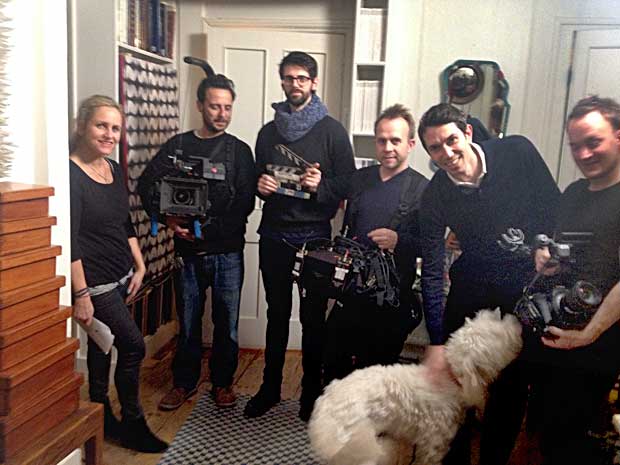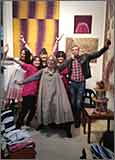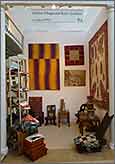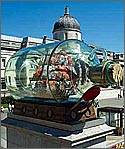Esther
Fitzgerald Rare Textiles 28 Church Row London NW3 6UP T:+44 (0)20 7431 3076 mobile: +44 (0)7773929189 |
News |
|---|
News update Textiles are the second most polluting industry. Some of what is manufactured goes into land fill within 6 weeks of it being purchased. |
|||||||||
|---|---|---|---|---|---|---|---|---|---|
Later in the year we had a craft fair of things we had made or recycled. |
|||||||||
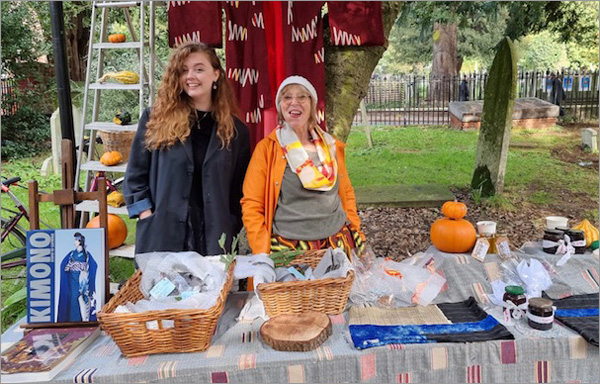 |
|||||||||
Exhibitions began to open again and it was a total joy to see Louise Bourgeois exhibition “The woven child” Textiles are so much part of our emotional memory . As a daughter of a tapestry dealer and a tapestry restorer she had more experience of this resonance than most. Weaving was part of her DNA. Spiders were weavers too, she called her spiders Maman. Inspired by this exhibition we have been re-inventing some rare fragments. We may put these in a separate section. |
|||||||||
|
|||||||||
In April the William Morris Gallery hosted an exhibition of Althea Macnish.
This was curated by Rose Sinclair from Goldsmiths University and introduced new material and research.We lent one piece to the exhibition which was Van Gogh, commissioned by Hull Traders in 1960 . |
|||||||||
|
|||||||||
In May this year we exhibited at The Decorative Fair in Battersea - unfortunately I got Covid just before the set up. My wonderful friends rallied around and helped me and by opening day I registered negative. |
|||||||||
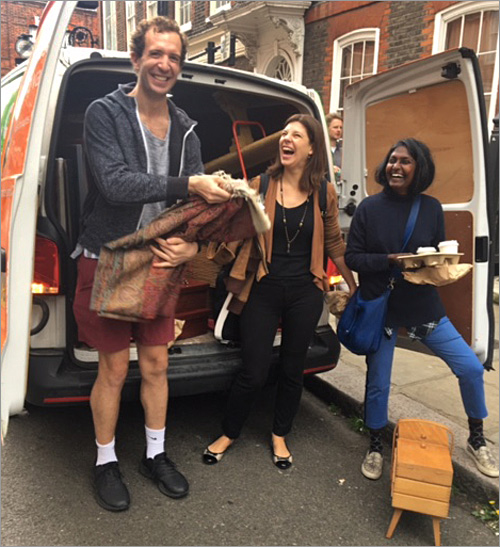 |
|||||||||
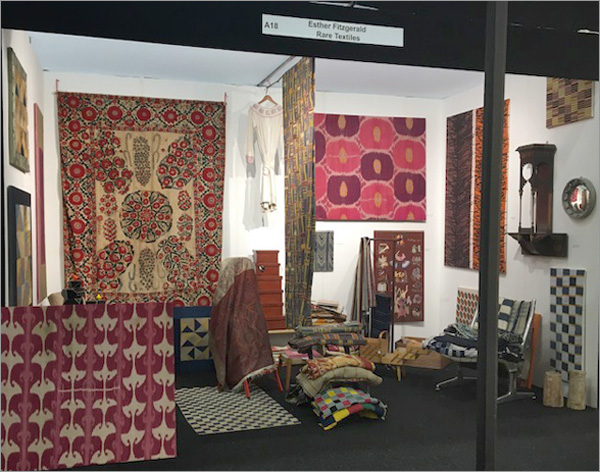 |
|||||||||
The flavour of the year has been African textiles- particularly Ewe Cloths from Ghana .
Many new ones have been added to the African section. We have a new tunic by the above mentioned Raymond Duncan (brother of the dancer Isadora Duncan) which seems very relevant to today . In modernist section along with a design by Donald Hamilton Fraser. In the Islamic section we have the best Suzani I have ever had the good fortune to handle which once belonged to William Burrell.
On the downside I have been Scammed out of my .com domain web address which also includes email sent via .com email address Please in future use estherfitzgerald.co.uk and email - esther@estherfitzgerald.co.uk The next few months will be a challenge, let’s rise to it. The secret, I believe, is community all problems are better shared.
Very Best Esther
|
|||||||||
January 2021 It seems that not a great deal has happened in the textile world , since almost the whole world went into lockdown in March 2020. However lockdown has given us the opportunity to slowdown and recalibrate and connect .The population of London is over 9 million but during lockdown it began to feel like a small village. We walked and talked and shared common experiences of being in our gilded cages and things were not all bad. |
|||||||||
More recently I was asked by Polly Lenard the founder of Selvedge to do a virtual talk on the subject of Collecting which Polly has kindly consented to me posting here . I was joined by Sophie Roet and Bess Nielsen. |
|||||||||
Virtual seems to be the modus of the day and staring on 26 th January until 14 th February I will be exhibiting at a virtual fair. |
|||||||||
|
|||||||||
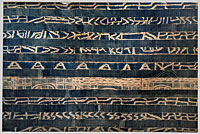 Cameroon Ndop |
I have not acquired a great deal of late but we have added a few new acquisitions, a new Ikat robe , and Ikat mounted panel in Islamic and a very graphic Cameroon Ndop cloth in Africa. As I write Joe Biden has just been sworn in as Us President and world seems a safer, better place. However Covid is still a very present issue so please all stay safe. We will emerge from this episode with a clearer understanding of who we really are and what we must do to benefit the common good. |
||||||||
Sepember 2019 |
|||||||||
|
I was very excited about a few exhibition which were scheduled in the last few months. Faith Ringgold exhibition at the Serpentine Gallery until September 8th is a delight. She combines painting with appliqué and quilting both telling a story and placing it in a cultural time and space. My favourite was “ on tar beach “ it was a urban novel with so many contradictions. Textiles and pollution The Market Recently the Roderick Taylor collection came on the market and I was lucky enough to acquire some interesting pieces. One see ‘islamic section ( link ) is a Turkish-embroidered sofa cover depicting ideas of Arcadia . I also bought a group of embroidery from Rhodes . Dating from the late from around 1700 reflecting armorial designs left over from the time of the crusades. The video on this News update features an extraordinary embroidery which I have been researching for 30 year it was created around 1690 to 1700 in England .My research (to this point is incomplete ) is on the source material for the variety of images represented. Any clues most welcome. .....
|
||||||||
News update September 2018 |
|||||||||
|
Art is not the truth |
||||||||
|
Anni Albers Annie and her husband Joseph seem to have successfully straddled both. So I am excited to see exhibition which starts 11th October . Episode 3 on our 2 min video is on textiles that maybe inspired them.. |
||||||||
|
Too modern for the Royal College |
||||||||
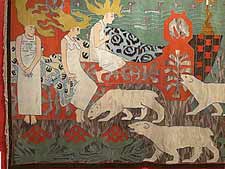 |
‘Homeless in our own living rooms’ |
||||||||
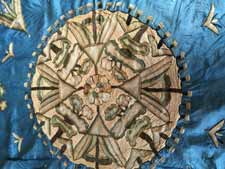 |
New Textiles |
||||||||
News update May 2018 |
|||||||||
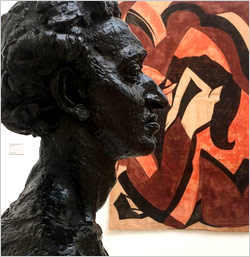 |
Leeds: |
||||||||
Ancient and Modern: The Ikat exhibition “To dye for” is currently at the Arthur M Sackler, Washington DC. The exhibits were a donation from Guido Goldman. This prompted me to again look at his book”Ikat” .He sites his love of Ikat as stemming from his love of German Expressionism and his love of Kandinsky . I find this fact very reaffirming of human need of colour in both modern and ancient society! Kandinsky was hugely influenced by “Thought Forms” the work of Annie Bessant particularly her paintings of what she saw when she heard the music of Mendelssohn, Wagner and Gounod . Kandinsky had synesthesia- when he heard music he saw colours- he so identified with her painting that he completely changed his painting style and became an Abstract Expressionist. Central Asia has more Sufi schools than other part of the world and are highly influenced by Zoroastrianism -which later develops into the more mystical side of Islam . Connecting again the ancient and modern – Johannes Itten,( friend and colleague of Kandinsky) and the major scholar on colour theory at Bauhaus was also a Zoroastrian . I believe that the weavers and dyers of Central Asia knew intuitively the power of colour combinations and harmony and the effect on our well being. It is interesting to think that Asian civilisations had knowledge much earlier than the Modern Western world . Strangely the reason Kandinsky visited Leeds was to discuss the connection with colour music and emotion . |
|||||||||
The Bloomsbury Group and The Algonquin Round Table: I was also delighted that Marian Stoll has been featured in a scholarly book by Dr Cynthia Fowler-. “The Modern Embroidery Movement” published by Bloomsbury.(see research). In her letter to Ottoline Morrell ,Marian Stoll mentions she doesn’t mind financial hardship as long as she is remembered posthumously - so I always felt it was part of my duty to bring her to public mind. Recently I have been fortunate to find two more of her embroideries. Also her letters to Bessie Morrison have recently been given to University of Notre Dame in USA. She was an extraordinary woman straddling both the Bloomsbury group here in Uk and the Algonquin Round Table through Alec Woollcott in USA . |
|||||||||
New stock : rich pickings I have been very lucky in currently handling a fabulous Shahrysabz Suzani, formerly owned by Sir William Burrell , a wonderful velvet Uzbek Ikat, and two rare 18th century shawl fragments.see Islamic Also a few new African textiles .see Africa |
|||||||||
Home front:
The hero of my website is Horst Kolo -we have been working together for over 30 years - firstly as my photographer and then my Web Lord. Early this year he fell down the stairs and was really badly injured - I was mortified .He is now recovering and we will be slowly updating the site but it will not be as fast as promised in our last update . |
|||||||||
Episode 2. The Moghul drawer. Video features 2 mins about our Moghul drawer Please don’t hesitate to contact us should you have any rare textile issue. Very best wishes to you all |
|||||||||
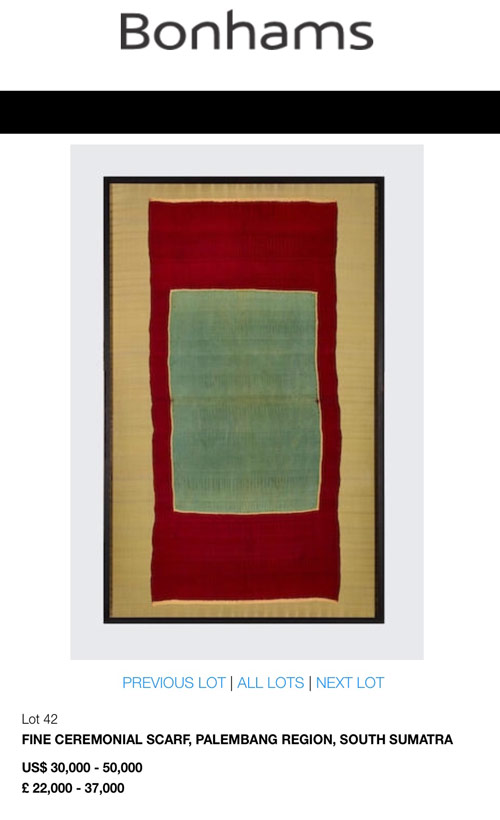 |
PS
It has just been pointed out to me that a lowan is up for sale in LA . All I can say is “ interesting “
Lot 42 Fine Ceremonial Scarp, Palembang Region, South Sumatra US$ 30,000 - 50.000 £ 22.000 - 37.000 |
||||||||
|
News update Oct 2017 Adventures Exhibitions The Market The sale of a magnificent Ottoman velvet at Sotheby's in April was a world record. If I came across a tiny fragment of this velvet I would have been extremely happy but a complete panel with great provenance it was going to sell for a huge price and it did - selling for £ 1,076,750. (see pdf BBC Homes and Antiques)
|
|||||||||||||||||||||||||||||||||||||
|---|---|---|---|---|---|---|---|---|---|---|---|---|---|---|---|---|---|---|---|---|---|---|---|---|---|---|---|---|---|---|---|---|---|---|---|---|---|---|
January 2017 |
||||||||||||||||||||||||||||||||||||||
Life in flux. Life has always been in flux but 2016 was shocking for the liberal elite........ My total disbelief that Donald Trump had been elected as President of America still has me awake at night..... However I believe the Chinese word for crisis actually means opportunity! So maybe this is what we have - an opportunity! Enough of my personal musings - back to rare textiles Paul Nash at Tate Britain ( untili 5th March) is billed as the most important exhibition of his work for a generation. Having spent some time researching Paul Nash's block prints and designs for textiles I was really looking forward to this exhibition. It is a good exhibition - the war paintings are haunting and beautiful Opus Anglicanum. V&A until 5th February New acquisitions. |
||||||||||||||||||||||||||||||||||||||
September 2016
Art and Weaving The desire to be creative in the confines of ones environment is powerful! |
||||||||||||||||||||||||||||||||||||||
|
February 2016
Proportio The best thing by far that happened in the past few months was my trip to the Venice Biennale. I am told by the avant garde who regularly do this event that it was not the best year but there were somestunning exceptions. It was difficult to find anybody to disagree that Proportio while not officially part of the Biennale was the best exhibition in Venice. Find the pattern spot the difference not just in a textile but a philosophy for life. In the past we were all finally attuned to the subtle, we knew when things were out of sync. We still know! if we attune ourselves but in the past decades we have not been encouraged to use our intuition to tune in . Proportio curated by Axel and May Vervordt took the subject of sacred geometry and explored it through artists from Botecilli to Marina Abramovitz and Anish Kapoor . A fabulous book illustrates the exhibition but nothing compares to being there , so thousands of apologies for not getting my act together to tell you this before the exhibition finished. How to find order in an increasing chaotic universe ? Architecture, physics, music, psychology the micro and the macro all were shown to be connected. At the moment when life seems full of uncertainties I found it life affirming. Each Biennale is given a theme. in 2015 it was "All our futures" taken this into account I think the the British Councils dated choice of Sarah Lucas was a cause for their resignation. Seriously! It was really awful. On the new acquisition front the past few months have been quite fruitful- almost like the pre 2008 years. I have found a really lovely 1840 kashmir shawl, some really interesting abstracts, a possible Voysey printed velvet, a very old ewe cloth and an emperial yellow brocade made more I am planning to do the Battersea Spring Decorative Fair from April 19th to 24th .Please come.Its a freindly fair and you can even bring the dogs. |
|||||||||||||||||||||||||||||||||||||
| I hope that as many of you that could, managed to see the Alexander McQueen show either in New York or London. His interest in world culture and the whole debate about what it is to be human was beautifully explored in what really was an exhibition of the most inspiring cat walk shows ever . I didn't expect to be blown away but I was! I totally identified with his areas of exploration. The cabinet of curiosities, memento mori,the museum of the mind his knowledge of myth and story, the tribal world ,18th century tailoring and more, much more. I loved his curiosity. On the bus home I fantasized having breakfast with him (the day would not have been long enough if we started with lunch) sharing book references, my love of Egonata, the work of Robert Lepage, William Morris, Bill Viola ect. One sometimes despairs in the modern world that people are only interested in flat screen tv, mobile phone aps and shopping. That the past is a distant planet and our culture is dying. For a brief moment Alexander McQueen made people in high fashion - those that bought it or those that just talked about it, sit up and think, he awakened in a certain group of people their cultural curiosity. If you didn't go try and get the book! |
||||||||||||||||||||||||||||||||||||||
New on the site |
||||||||||||||||||||||||||||||||||||||
|
After about 15 years of requests to find a reliable source of modern Tibetan chequer boards I have succeeded! We now have both black and white and indigo and white samples to take orders from. Sixty knots to the inch which is much tighter than the traditional Tibetan chequer board. So we have new category on our website called Rare Contemporary. I have acquired a group of seven Ethiopian pilgrim sticks. Each of these sticks is a the sole possession of a pilgrim on his oddesy. I have found a Ethiopian chair remarkably carved from one piece of wood. We have also a bold graphic group of phulcaris', a lovely aubergine Lowan, new indigo pieces and a rare textile we are attributing to Duncan Grant or possibly Ashley Havinden in Modernism section .Also a new suzani and a bolster cover from Fez in Islamic. Our omega textile "maud" not only is touring the world but was recently seen in the new BBC drama series "Life in squares " a not brilliant glance at the Bloomsbury group but good to see the familiar life style of the original Bo ho. Sadly for me the fact they were thinking people didn't come over at all in the drama. I have just heard of the sad news that our friend and client Sam Josefowitz has died. Sam was larger than life. He was definitely one of the reasons why I love my job. He had an agile and curious mind that made him the best company .His visits were a joy he was one of life's enthusiasts. I used to joke after his visits that I had Sigmund Freud for tea. He had that Jewish Eastern European intellect but wore it lightly. He died in New York at the age of ninety three . He will be much missed but a life well lived! I hope you are enjoying the holidays and will return happy and fresh for a new academic year. I love the word Recreation - ' to re create oneself. ' |
|||||||||||||||||||||||||||||||||||||
May 2015 |
...Spring is here ! |
|||||||||||||||||||||||||||||||||||||
|
||||||||||||||||||||||||||||||||||||||
I was thrilled to have sold our Seed and Spirit of Modernism book ( Abstract Asian) through Koenig books at the Whitchapel Art Gallery during Richard Tuttle exhibition. |
||||||||||||||||||||||||||||||||||||||
|
||||||||||||||||||||||||||||||||||||||
Back in the UK our Paul Nash, Footprint, Omega and Follit textiles will be exhibited at The Gordon Russell Design Museum exhibition ”Teaching the machine manners” Making in the dawn of the modern world, which opens May 2nd to July 18th. I have become interested in vintage art equipment so have added a few new additions to our rare object section. I have also acquired a lovely emerald green lowan which is in our abstract section and a soft subtle Bukhara susani which is in our Islamic section. |
||||||||||||||||||||||||||||||||||||||
BIG SORRY: On account of this we have added a new email address - efraretextiles@gmail.com . As I walked my dog this morning in the full spring sunshine I could hear the buds popping on the trees. Life is full of hope ! |
November 2014 |
Those of us that love textiles know the magic they hold, the stories they tell and the influence they have had on both world economies and our souls. In our society today it is often the very best of contemporary artists that reflect or influence our thinking. Therefore it is very reaffirming that so many these days are taking their inspiration from textiles.
The latest of these to get major billing is Richard Tuttle with his large scale work at The Tate’s Turbine Hall entitled “I Don’t Know – The Weave of Textile Language" and an exhibition at the Whitechapel Art Gallery. Tuttle, a collector of textiles from around the world, has focused and expanded his knowledge beyond the obvious to the subtle resonance that only contact with hand and mind can command. The work itself doesn’t do it for me but the accompanying book (of same title ) illustrates his sensitivity and deep knowledge of the subject of textiles. He is a connoisseur, anthropologist, cultural historian, poet and artist. The Tate at the moment seems to be having a bit of a romance with textiles, having just done Matisse (including his textiles)and the upcoming Sonia Delauney planned for next year. The lovely Robert Kime has reproduced the Barron and Larcher ( in our modernist section) and printed in pink and green and delighted me by renaming it Esther. We have also added a few new textiles to the African ,Indigo and Abstract sections. I do miss not exhibiting in the US any more. I really looked forward to touching base with my American clients at least once a year. So to all of you happy Thanksgiving and also (as I am never up to date with this site) Happy Christmas and may 2015 bring you all you wish it to. |
||||
August 2014 |
|
||||
July 2014
|
I have added two new links to our website – www.nadiaphillipsaboriginalart.co.uk and www.adambarkermill.com
This is extremely interesting from the point of view of expression and added a completely other dimension to their art. This is the reason why I have added Nadia Phillips to the website. Also Adam Barker Mill has been exploring the idea of light and colour for many years. I personally believe that Matisse’s interest in the colour combinations seen in Islamic and tribal art were what inspired him to do his later works, The Cut-Outs, now at The Tate. I hope at some point to do an exhibition with Nadia Phillips illustrating the power and cross-pollination of designs in textiles and in Aboriginal art. The “Artist Textiles” Picasso to Warhol where we were showing one of our Omega textiles, had it’s most successful exhibition to date. It is now touring Holland and later on Canada. We have just added an Omega piece to the Modernist section of the website. Other new things added to that section are embroideries by Gallenga and a Henry Moore scarf also exhibited in the “Artist Textile” exhibition. We have also added a beautiful Tibetan rug to the Asian section. 23rd July 2014 |
||||
February 2014 |
I went to New York in October 2013 to see The Metropolitan Museum of Art's exhibition "Interwoven Globe". It was very exciting to walk along Fifth Avenue - to read the banners of a major textile show at one of the most important museums of the world .It wasn't consigned to the small galleries but took over the major exhibition space. The exhibition was of worldwide textile trade from 1500 -1800 with a beautifully illustrated book. It was stimulating and thrilling to look at pieces that once I had seen in the wild open market place,profiled -to illustrate our world cultural story . One or two of the exhibits I had actually owned but the one that amused me most was chintz petticoat. |
||||
September 2013 |
|||||
We exhibited at Olympia this summer but it was sad to see that we were the last dealer to exhibit solely textiles. It felt very much like" last man standing" Given in the past we had the whole of the Hali fair and the top most dealers such Francesca Galloway and The Textile Gallery showing textiles in Olympia it was cause for reflection. The market for art is very much at the top, the rich are indeed rich but not seemingly comfortable with modest prices . The master piece fair in London this year was once more a place to be seen but maybe trying too hard to mug a rich person. However this year Olympia did have some of its original charm and lot of dealers reported that it was once more a place to buy for stock. Maybe the market had to burn out to rise from the ashes a more modest beast. I have always thought my role in this life was to educate and stimulate and maybe younger folk can now enter this world now prices are forced to be realistic. As the last man (woman ) standing we did do enough business to make it worthwhile and it is always a great opportunity to touch base with you all. I did manage to find a few new objects which should be up on the site very soon. I am very excited to find a pashmina with such an early date and the Mughal cover was a treat to come across renewing ,as it did, my belief that it was still possible to find rare things. Our modernist chair covered with the Barron and Larcher curtains from Girton will be exhibited at the Gordon Russell Design Museum this September. Another link that may well be interesting to textile folk is http://claravuletich.com/category/news/ the lovely Clara is doing a Phd on sustainable design supported by the Swedish Government. I am not sure our Facebook link really works but i shall endeavour to be more efficient with it. As it is back to school time - I wish you a good new term. |
|||||
May 2013 |
It has been a difficult year to find great objects and a difficult year for institutions to pay for objects that they wish to acquire as public funding has been reduced hugely. Our web presence however has really grown - this is mostly from people adding us to pinterest. I was in the V and A bookshop the other day looking at the range and number of books now written on textiles, none of which existed thirty odd years ago when I started to become interested in textiles. It was a brilliant time to find wonderful things that few people knew anything at all about I was indeed in the right place at the right time. Today we are number one on a world google search for "rare textiles". We will be adding a new section to the website over the next few weeks ,which will be rare objects, chosen on the same basis as the textiles. We are doing Olympia in June from 6th -16th and will be presenting a good group of newly acquired modernist piece's and some abstract Asian and African textiles along with a collection of African carved chairs. I am happy to email anyone tickets for this or alternatively you can pick them up at the door. Looking forward to seeing you there. Very Best Esther |
||||
May 2012 |
The Antique Textile World has shrunk considerably over the last few years but at last there seem to be signs of new shoots. From January this year things have begun to pick up.I have been widening my horizons by spending more time in the North of England in the past month, than at any other time of life. My first trip was to Maccelsfield Silk Museum. It was my first trip to a former silk mill and I left with a new respect for the Jacquard loom, it really was the forerunner of the computer. The conditions inside a silk mill were far more desirable than in a cotton mill where cotton seeds in the air made breathing difficult. One did feel that these mill towns had a real sense of community. My second trip was to Leeds to take a piece of Art to the Leeds art Gallery.Here I realized how London centric my views really were and it was interesting to realize how avant garde Leeds was in the modernist period. Even more recently some of our major British Artists - Henry Moore, Barbara Hepworth and Damian Hurst come from Leeds or the surrounding area. While in Leeds I was encouraged to visit Saltaire. If Blake had been to Saltaire he might never have written Jerusalem. Now it is a world heritage site and well worth a visit. I have also been encouraged of late by the number of contemporary artists who are incorporating textiles in to their concepts. Currently two exhibitions at the Tate Modern: Boetti and Kusama are prime examples as well as Louise Bourgeois at the Freud in Hampstead.
I have also been looking for textiles and although far more difficult than in the past I have managed to find a wonderful early Nurata Susani, some modernist textiles and a few indigo and Ewe cloths . All these should be on the website shortly. From June 7th -17th we will be exhibiting at Olympia . Let me know if you would like invitations and we will email them to you. With best wishes. Esther. |
||||
15/04/2012 |
We will be exhibiting at Olympia International Fine Art and Antiques Fair this year from the 7th -17 June. Link |
||||
19/09/2011 |
We have a new Video Page | ||||
What is a price? |
|||||
I think of myself as a professional in valuing textiles within a sphere of importance. I am a thorough researcher and where I have doubt I seek out the top academics . Some 20 odd years ago I sold a rare textile for £10,000. I later discovered it had been sold on for £165,000.00. I considered what I might have got wrong in its assessment I concluded that everything was fine apart from my failure to imagine a price as large as was reached. I resolved to think bigger! Institutions have public finances to defend and one has has to justify prices within a set market. When something is extremly rare there is very often a problem as there is nothing to compare it with. So one asks oneself the question: "could I find the object again?", if the answer is no, then the question is: "what is the price ?" For some time the textile shown on the left has been on our website. We offered it to our major Islamic collectors but all turned it down because it was unfamiliar to them. It was offered on the website for a modest £4,000. After a while I sold it to a fellow dealer at cost . (no point in flogging a dead horse) It was then sold on, went to another dealer who put it into the Sotheby's Sale on April 6th 2011 as lot 349 and it sold for £33,650. I am telling you this story really to recommend that you look at the site more often as we both could be missing out on making a fortune. The other news is that we have completely overhauled the website removing all sold items to an archive, improved links, adding our favorite websites and hopefully made it more user friendly. If you can see ways in which we can improve it even more do not hesitate to contact us. Excerpts from the Marian Stoll letters are now up, I hope these will be taken advantage of, as they are a great research resource into the days of the polymath. In the meantime enjoy the spring and summer. Very best, Esther, April 2011 |
|||||
|
Yinka Shonibare Week-end, at The National Maritime Museum, Greenwich I was thrilled to be asked to contribute to a debate on the work and influence of Yinka Shonibare on 26th and 27th February. 2011. The NMM were exploring the history and inspiration behind Shonibare's Fourth Plinth commission Nelson's Ship in a Bottle currently on display in Trafalgar Square. Shonibare uses what is popularly believed to be West African wax batik cloth to give his work an African authenticity. The irony being that the cloth was originally made in 1840’s, in Holland for the Indonesian market as machine made copies of the indigenous batik. Today West African wax cloth is still made in the U.K. and Holland but the majority is made in China. Yinka discussed his work at the Saturday debate, mentioning that for his art to make an impact of thee seconds, he sometimes puts a year of research into it. Many Anglo- African members of the audience at NMM spoke of the healing quality that his work held for them. I will not describe his work, words are bad tools in describing art but I will direct you to his web site www.yinkashonibarembe.com The Sunday debate was between Beatrice Behlan of the Museum of London, Amy Miller of the N.M.M., me and the audience. We discussed trade with Indonesia and Africa, and contemporary ideas of cultural identity. We reviewed why the Indonesian market rejected the cloth and left the Dutch with ship loads of unsalable machine made batik. I speculated that in Indonesia, where, textiles were an intrinsic part of the culture and esteemed not just for clothing and identity but were very much part of a philosophical journey, cheap machine made substitutes was never going to be acceptable. We considered why this same cloth was so readily accepted in West Africa, touching on the traditional hand woven textiles which existed before 1840 and the limited colour range available in them. Owning textiles in Africa was a sign of wealth. Few could afford more than one garment. We concluded that these colourful cottons were relatively inexpensive and in a world that had never seen polychrome printed cottons, the colour contrasts and endless patterns must have been pure delight, and left a lasting legacy in West Africa. Esther Fitzgerald March 2nd |
||||
|
October 2010 Silver lining's I seem to have spent the past summer researching a Ballet Russe Costume.The problem with the inter-net is you can drown in information. I have looked at almost every production of the golden period of Ballet Russe; the back drops, the costumes and the synopsis to search for clues to this particular costume. I have taken it to the world's experts. I know what it is not, but the mystery continues. What it is: view image A costume made for a male dancer. Constructed in a typical manner for ballet. It is lined in warp faced cotton.The base cloth to outer dress, which is embellished with silver embroidery, is also warp faced cotton. A very interesting feature of the design to the body of the costume is the overlapping circles know as the genesis symbol. The arms are embellished with a cloud, wave or fire design in silver and orange. In the left inside shoulder is a mark Russe C.B. I am putting on our site hoping that some one will know immediately which production it was from. Led by the flame design on the sleeve, I started my research with Firebird. However most of the records for Firebird were destroyed in a fire and having spent a day at The Theatre and Performance archive at Blyth Rd found very little to confirm any association with Firebird. I have now explored many other productions so far with no luck . So now I am hoping that some one out there will recognise it. I also have added some ikats to the Islamic sections and some modernist pieces to that section. Having extensive material now on Marian Stoll we will be adding it little by little to the research section. We recently acquired a new piece by her that was published in Studio Magazine in September 1927. It was previously owned by V.M. Allom a contemporary of W.H. Auden at Oxford. We are building a bank of information on this formidable woman. We have found letters she wrote to Ottoline Morrell in England and to Alec Walcott (a member of the Algonquin set) in the United States. She was an extremely interesting woman and a member of Avant-Garde. Apologies again for being slow to update the site, but please feel free to contact us, many things don't make it to the site. We are also very happy to search things out for you. Very best wishes, Esther |
||||
 |
November 16th 2009
Volume 2 of "Seed and Spirit of Modernism" is now out in the big wide world. We launched it at the Livingstone Studio, which was a great location for the launch and a party. We have added a few pictures to the website in "Past exhibitions". Volume 2 is also available from Franks 5 Winsley Street W1. We are also about to add a new section to website which will be "Indigo." At the moment I am very keen to buy good early kashmir shawls and good Uzbek ikats. I have also been trying to research Paul Nash block printed textiles of the 20s. So I am keen to see anything any one may have on him. The Auction rooms are now very poor sources of new material so thank you for continuing to offer us new possibilities to buy. We are always happy to see anything you may have. We have also added Rozanne Hawksley to our links, Rozanne is the first contemporary artist working with textiles that I have been really excited by. Her work is extraordinary! A book on her is available "Rozanne Hawksley" by Mary Schoeser published by Lund Humphries .isbn 978-1-848220026-3 The downturn in the economy has apparently resulted in a few unexpected delights. Apparently more of us are now involved in more creative pursuits and are keener to develop integrity and well being, rather than piles of money. So I send many good wishes to you all in this new world, emerging from the dark ages of the 20th century. |
||||
May 2008 News Update Despite the economic gloom that has been spreading for the last six months,we have been really busy ,so much so that the website has suffered from lack of attention. Horst my ever intrepid web man runs some very successful sites and has been overwhelmed in the last few months. In the gap from communicating our " Seed and Spirit of Modernism Catalogue " has been a great success and is even being sold at the British Museum bookshop along with Blackwells ,Amazon and Waterstons which is very encouraging. An article in The Financial Times last October also gave us a boost. In a few days I leave for a short trip to Boston and Rhode Island and on to New York for The Tribal Art and Textile Show. Nat Turner will be helping me once again and we will be showing a mixture of Modernist and Tribal pieces both for collectors and decorators illustrating my new direction in the seed and spirit of modernism. Tickets for the show At The Gramercy Park Armory, Lexington Ave at 26th Street ,opening hrs 11am to 8pm, Thursday 15th and Friday 16th .Sat 17th from 11am to 7.pm Sunday 18th 11am-5pm. will as ever be at the door and collected under the name of Fitzgerald for anybody who would like to come along. Please feel free to give us a nudge if you are looking for anything that is not up on the website ,we are acquiring textiles all the time, many of which do not make it to the website. When we return from USA we will be starting a new catalogue which is entitled "Colour in Time and Space" an exploration through textiles and will be looking to acquire pieces that will fit this title. Both Nat and I will look forward to seeing you in New York. |
|||||
 |
Seed and Spirit of Modernism - An exploration through textiles The new catalogue is available for £32 plus Postage and Packing. Email your order here Thanks. |
||||
News Update: May 1st 2007 We have added two extra sections to the website; press and textiles under £400 hopefully these are self explanatory. San Francisco was thoroughly enjoyable ,since which I have had my head down doing research of one sort or another. At the moment I am particularly interested in an artist and embroiderer who worked in 20s and 30s in UK and in 40s in USA. Her name is Marion Stoll if anybody has any further information on her I would be very grateful to receive it. We are in New York at the Tribal and Textile Show from 19-22nd May, with a group of new acquisitions including some Joseph Hoffman panels, some very interesting Turkish towels, some great energetic Ndop cloths and an extraordinary 1920’s embroidery which has kept me in libraries for at least the last month. There will also be our usual mix of Japanese, Greek, Tibetan ,Indian ,African and Central Asian. If you would like tickets for the show, as always they will be at the door under the name of Fitzgerald. The dollar exchange has worried some of our American clients but in reality our expenses are less and very often the international currency in which we buy is dollars, so it may in-fact work out cheaper to buy from us in New York. Nat Turner will be helping me in New York and we both look forward to seeing you there. |
|||||
